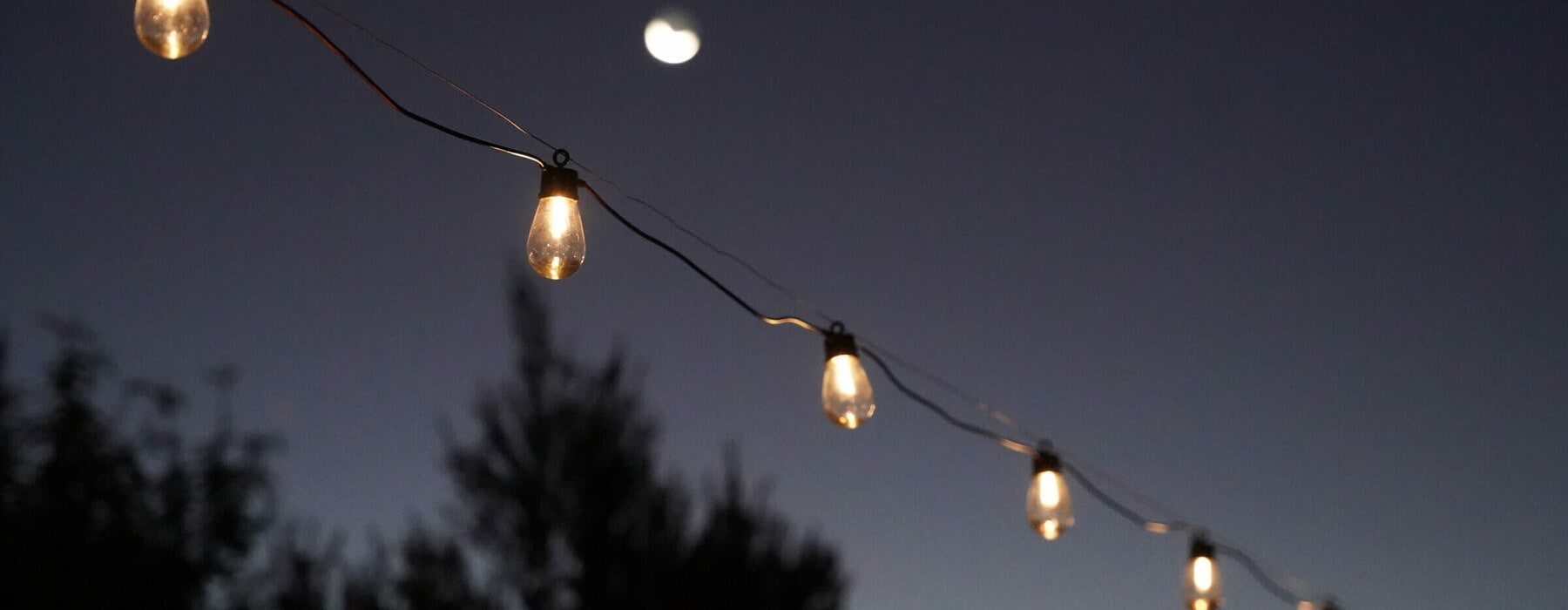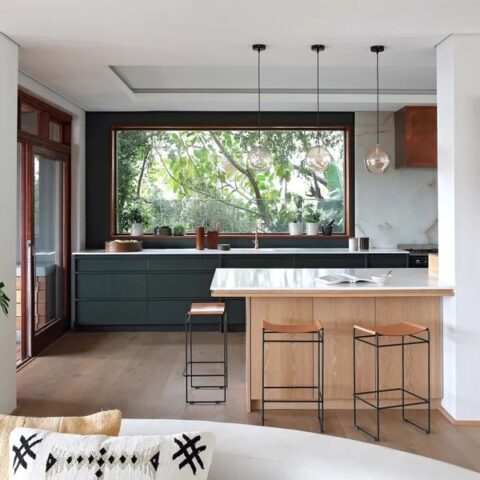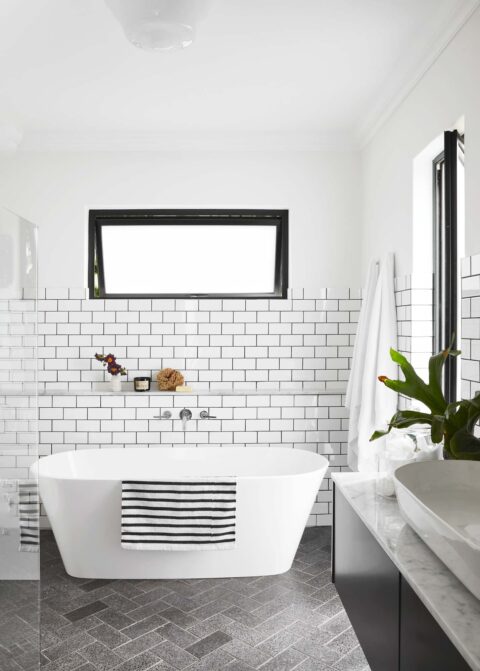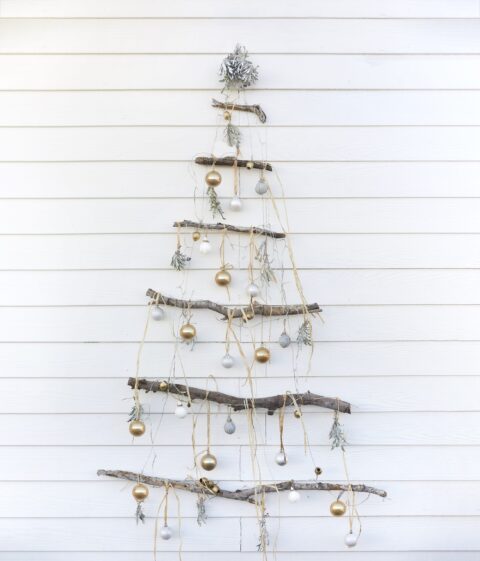From festoon lighting to floating bowls and firelight, here’s the magical ways to turn your garden into a summer wonderland.
Nothing transforms an outdoor space like magical, mood-setting lighting, but who likes hanging them up? Not me. In fact, one set of lights was harmed in the writing of this story when, balanced precariously up a ladder trying to tie some solar-powered festoon lights to the fence in our backyard and shouting to my partner at the other end of the lights, “I need you to do this. I’m not a tall person! This is hard for me!” – the string of lights snapped in two, and that was that. After realising that, annoyingly, I couldn’t blame him, we extracted the broken section of lights from the broad beans. Trying to turn my frown upside down and feeling bad about the waste, he said in an optimistic voice, “You know, someone who has time [he meansme] could solder these back together…” Well, I’m flattered that he thinks I might secretly have those skills after all these years, but I don’t and I won’t. My vision of turning my garden into a twinkling grotto has, however, taught me a few tricks about garden lighting – including what gives maximum effect for minimum effort, and when the sun sets and the garden is lit up and all is calm and all is bright, I assure you, it’s definitely worth it.
Solar versus electricity
Most outdoor lighting is available as solar powered or electricity-powered options. Both have pros and cons. Solar lights are easy because you can put them up wherever you want without worrying about cords and power supplies. They’re also more eco-friendly because you’re not using up power, plus they’re free to run because sunlight is free! However, they can be fickle things that annoyingly flicker on and off if they haven’t been charged enough. You need to make sure that the solar panel on them receives four to 10 hours of sunlight so that the rechargeable batteries inside have been able to convert enough sunlight into power to make the lights go. You also have to wait for it to be dark before they turn on. However, if it’s not quite dark enough to trigger them, you can covering the solar panel with dark tape (tricksy huh!). Just remember to remove the tape during the day so the lights can recharge. Solar lights will also stop working when the batteries wear out and need to be replaced every year or two.
Electric lighting is reliable and brighter but tends to be more expensive depending on the types of lighting you are using. LED lights are a better options than incandescent lights as they use less power. Only use decorative lights suitable for outdoor use and plug them into a residual current device (RCD), which protects you from electric shocks. Extension cords should also be suitable for outdoor use and have inbuilt RCD units. You can also buy transformers with timers so you can turn your lights on or off and you individual sensors which turn on lights at dusk and turn them off at dawn.
Fairy lights
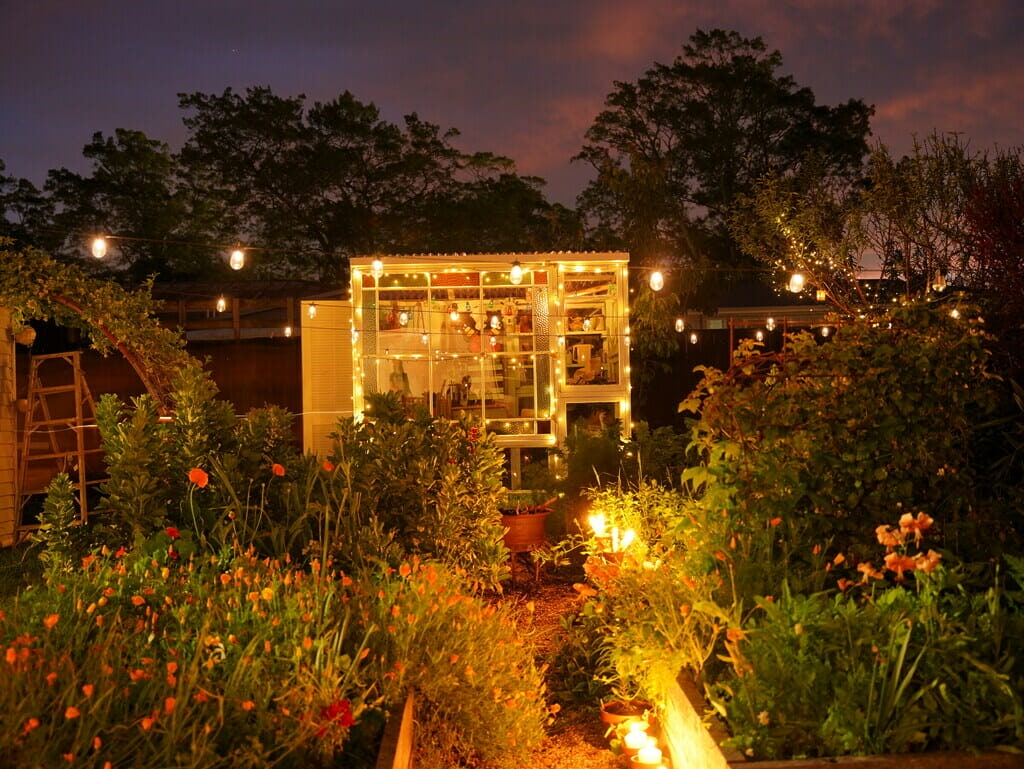
Once you’ve untangled them, fairy lights add a special Tinkerbell twinkle to everything and can transform garden sheds and look magical in trees, cascading like a waterfall or woven through trellis or strung over archways. They’re also relatively cheap and there are a range of colours to choose from. Warm white creates a candlelit glow whereas cool white captures more of a winter wonderland crips vibe.
Festoon lights
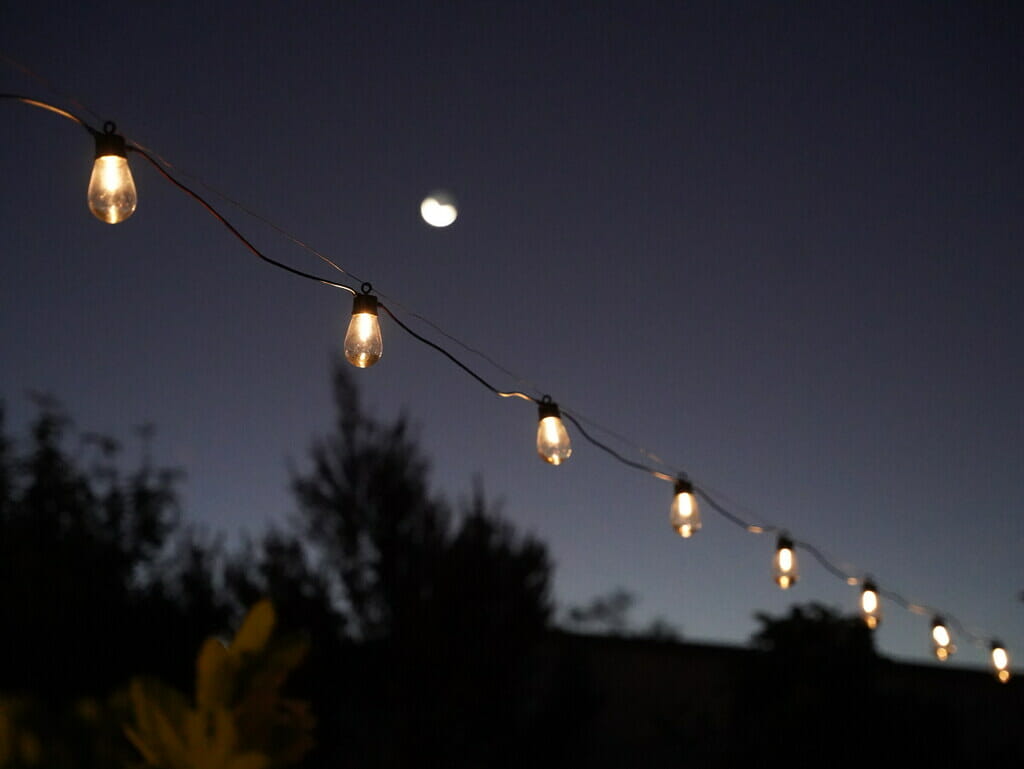
These strings of bulbs create an instant sense of occasion and also add a retro feel to a space – especially coloured ones. Lengths range from 5m long (this is for the length of the lights not the cable) with 10 lights to 55m log with 100 bulbs. Festoon lights have loops at the top and should be threaded through a wire so that they can easily hold their own weight and don’t snap (I learnt this the hard way). This also prevents them from drooping too much in the centre. Using a wire or rope also means you can extend their reach. They also look great strung along a fence line. Use hooks instead of nails makes it easier to attach them. Bulbs on electrical lights, as opposed to solar options, can be replaced. Compared to fairy lights, they’re not cheap, starting at around $50 for 5m solar-powered strings ranging to around $300 for 16m electric cables.
Candles and lanterns
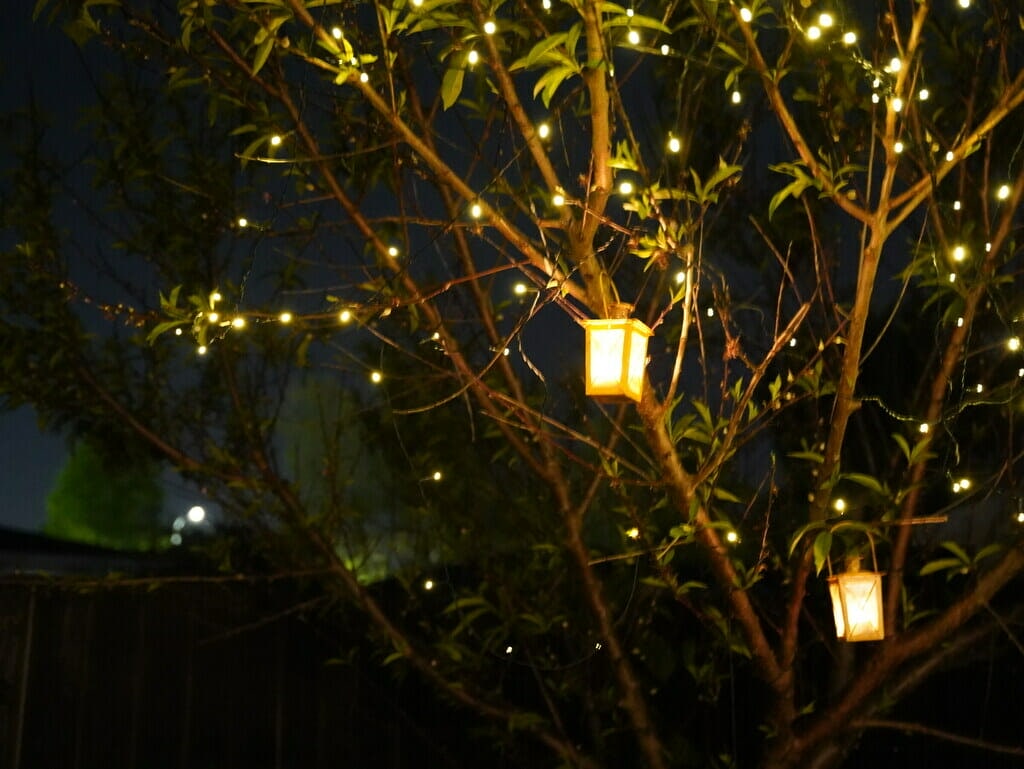
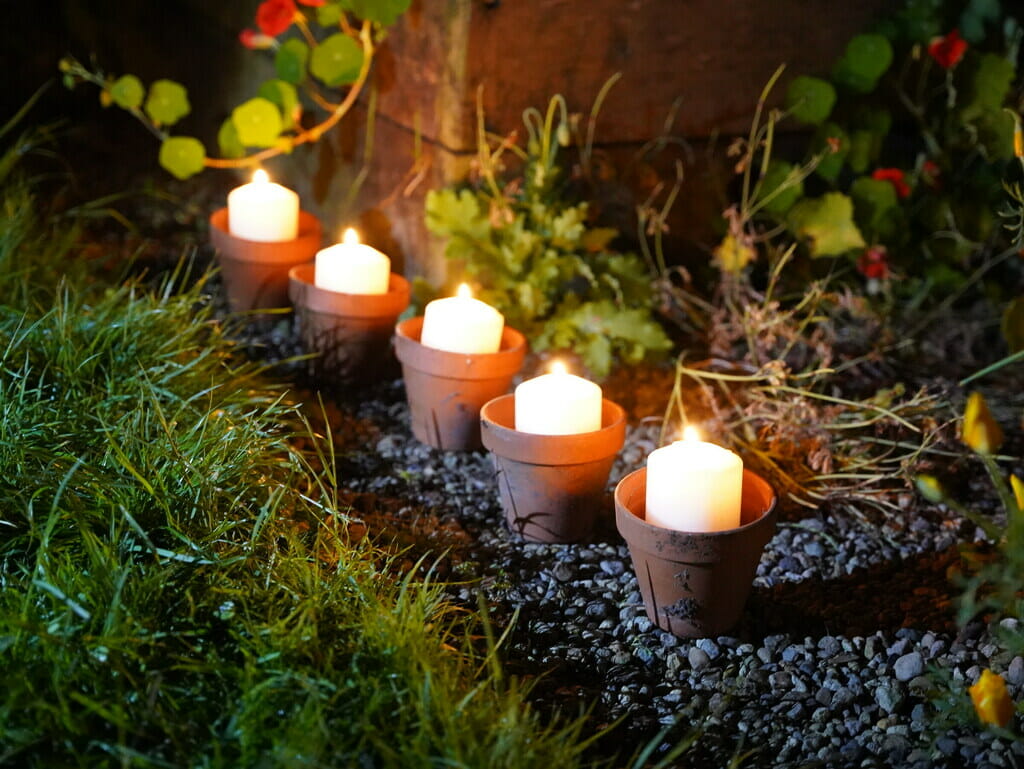
Lighting a candle creates instant calming ambience – perhaps it’s some kind of subconscious connection to our ancestors warming themselves around the fire. Plus they appeal to all our senses – the sound of the candle flickering or of lighting a match, the feel and smell of wax and the soft lighting. Tin lanterns add a rustic charming feel to a garden and can be purchased from hardware stores or camping shops. Put tea lights inside them or forego the candles and purchase solar-powered ones. Suspend them from trees or hang them from porches. You can also fashion your own lanterns out of wire and jars by twisting wire around a jar with a rim and popping a tea light into it. Don’t forget about lighting at ground level too. Light a pathway garden-style by placing large pillar candles in terracotta pots or float flowers and tealights in a bucket of water.
Backyard bonfires
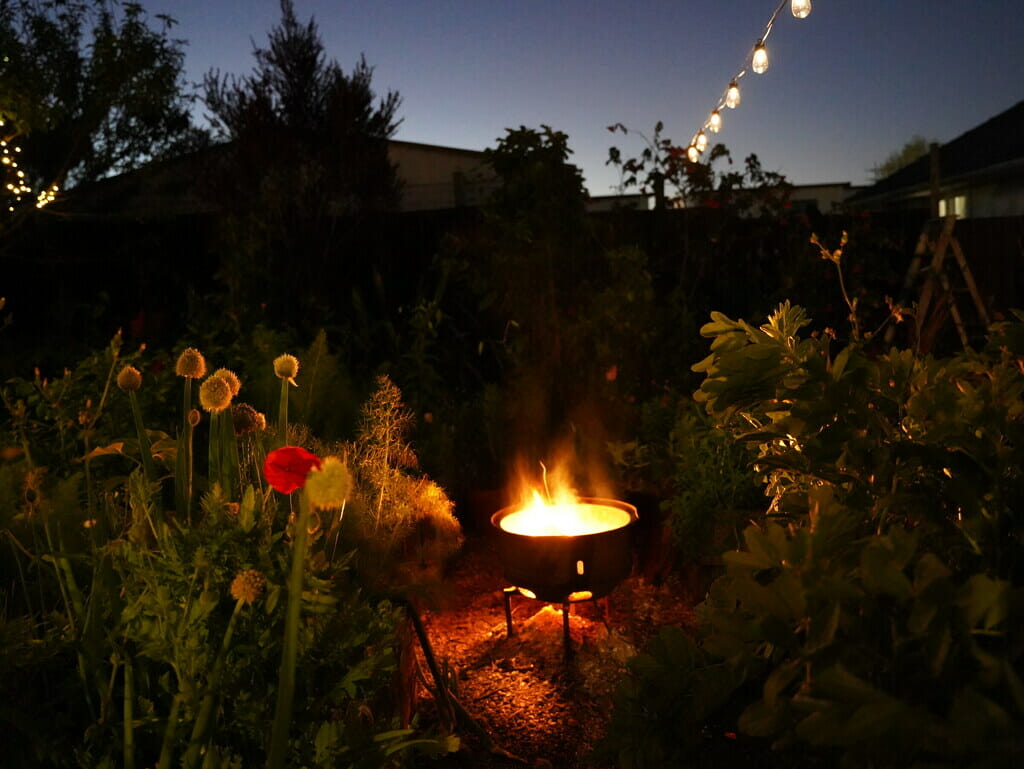
Fire pits are wonderful spaces for gathering around together and toasting marshmallows, and because they’re warm you can use them all year round. There are numerous options available, from chic corten steel offerings at various price ranges, or you can DIY your own out of stone pavers or bricks. Our fire pit is made from a rusty truck rim wheel welded onto some metal legs (not by me). It’s multipurpose too because during the day, we sit a bowl of water across the top of it which provides a drinking spot for thirsty bees and birds.

